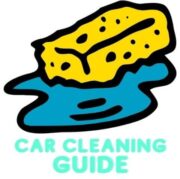- What Is The Two Bucket Method To Wash Car Properly - July 2, 2021
- 5 Best Car Seat For Grandparents That Impress Your In Laws - May 18, 2021
- 5 Best Rooftop Cargo Box For Audi Q5 [Review & Buying Guide] - May 11, 2021
Last Updated on January 29, 2024 by Chase Manhattan
Car scratches are an unfortunate reality of owning a vehicle. Whether it’s from a careless driver in a parking lot or a stray shopping cart, scratches can detract from the appearance of your car and decrease its resale value. Fortunately, there are several methods for removing scratches that can restore your car’s shine and make it look like new again.

One of the simplest and most effective ways to remove minor scratches is by using a scratch remover. These products are available at most auto parts stores and are designed to be used on small surface scratches. They work by using an abrasive compound to remove the damaged layer of paint, revealing the undamaged layer underneath. Simply apply the scratch remover to the affected area and buff it out with a soft cloth.
For deeper scratches, you may need to use a touch-up paint kit. These kits are available from your car’s manufacturer and contain everything you need to repair scratches that have penetrated the clear coat and reached the paint layer. To use a touch-up paint kit, clean the affected area thoroughly and apply the paint in thin layers, allowing each layer to dry completely before applying the next. Once the paint has dried, buff the area with a soft cloth to blend it in with the surrounding paint.
Quick Navigation
Understanding Car Scratches
As a car owner, scratches on your car can be frustrating. Scratches can be caused by a variety of factors, such as accidents, vandalism, or even just normal wear and tear. Understanding the types of scratches and their impact on your car’s value can help you make informed decisions about how to address them.
Types of Scratches
There are two main types of scratches: surface scratches and deep scratches. Surface scratches are minor scratches that only affect the clear coat, whereas deep scratches penetrate the paint layer and can even expose the metal underneath.
Assessing Scratch Depth
Assessing the depth of a scratch is important because it can determine the best course of action for repair. One way to assess the depth of a scratch is to run your fingernail across it. If your fingernail catches in the scratch, it is likely a deep scratch that requires more extensive repair. If your fingernail does not catch, it is likely a surface scratch that can be easily buffed out.
Impact on Car Value
Scratches can impact the value of your car, especially if they are deep scratches that have not been repaired. Deep scratches can lead to rust and corrosion, which can spread and cause more damage to your car. If you plan on selling your car in the future, it is important to address any scratches to maintain its value.
Overall, understanding the types of scratches, assessing their depth, and considering their impact on your car’s value can help you make informed decisions about how to address them.
Preparing for Scratch Removal
Before attempting to remove scratches from your car, it is important to properly prepare the affected area. This will ensure that the scratch removal process is effective and does not cause further damage to your car’s paintwork.
Cleaning the Affected Area
The first step in preparing for scratch removal is to clean the affected area thoroughly. This will remove any dirt, debris, or other contaminants that may be present on the surface of your car’s paintwork. To do this, I recommend using a car wash solution and a microfiber cloth or towel.
First, rinse the affected area with water to remove any loose dirt or debris. Then, apply the car wash solution to the microfiber cloth or towel and gently scrub the affected area in a circular motion. Be sure to rinse the area thoroughly with water and dry it with a clean microfiber towel before proceeding with the scratch removal process.
Gathering Necessary Materials
Once the affected area has been cleaned, gather the necessary materials for the scratch removal process. This may include sandpaper, isopropyl alcohol, and a scratch removal product.
If the scratch is deep, you may need to use sandpaper to sand down the affected area before proceeding with the scratch removal product. Be sure to use a fine-grit sandpaper and sand in a circular motion to avoid causing further damage to the paintwork.
After sanding, clean the area with isopropyl alcohol to remove any remaining debris or contaminants. Then, apply the scratch removal product according to the manufacturer’s instructions. Be sure to use a microfiber cloth or towel to apply the product and buff the area in a circular motion to blend the scratch with the surrounding paintwork.
By following these steps, you can properly prepare the affected area for scratch removal and ensure that the process is effective and safe for your car’s paintwork.
DIY Scratch Removal Techniques
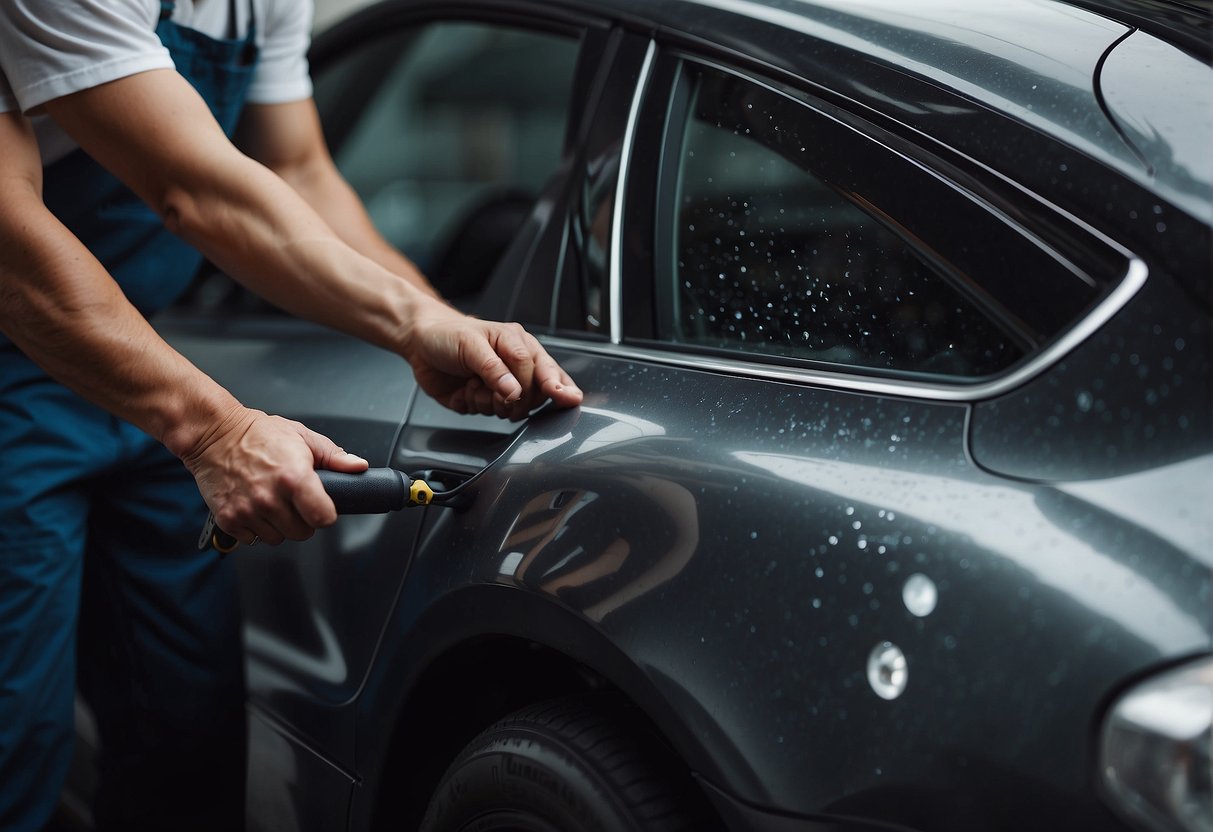
As a car owner, I know how frustrating it can be to see scratches on my vehicle. But the good news is that there are several DIY methods you can use to remove these scratches without spending a lot of money. In this section, I will go over three techniques that you can use to remove scratches from your car.
Using Toothpaste
One of the easiest and most affordable ways to remove surface scratches from your car is by using toothpaste. Toothpaste contains a mild abrasive that can help to remove scratches from your car’s surface. Here’s how to do it:
- Clean the scratched area with soap and water and dry it with a clean cloth.
- Put a small amount of toothpaste on a soft cloth and apply it to the scratched area.
- Rub the toothpaste into the scratch using a circular motion for about 30 seconds.
- Wipe away the toothpaste with a clean, damp cloth.
Sanding Method
Another method that you can use to remove scratches from your car is by sanding the area down. This method is best for deeper scratches that have gone through the clear coat and into the paint. Here’s how to do it:
- Clean the scratched area with soap and water and dry it with a clean cloth.
- Sand the scratched area with 2000-grit sandpaper until the scratch is no longer visible.
- Wipe away the dust with a clean, damp cloth.
- Apply a rubbing compound to the area and buff it with a clean cloth until the area is smooth.
Applying Scratch Removal Products
If you don’t want to use toothpaste or sandpaper to remove scratches from your car, you can also try using a scratch removal product. These products are specifically designed to remove scratches from car surfaces and can be found at most auto parts stores. Here’s how to use them:
- Clean the scratched area with soap and water and dry it with a clean cloth.
- Follow the instructions on the scratch removal product and apply it to the scratched area.
- Buff the area with a clean cloth until the scratch is no longer visible.
Overall, these DIY scratch removal techniques can help you to remove scratches from your car without spending a lot of money. However, it’s important to note that deeper scratches may require professional repair.
Professional Scratch Removal
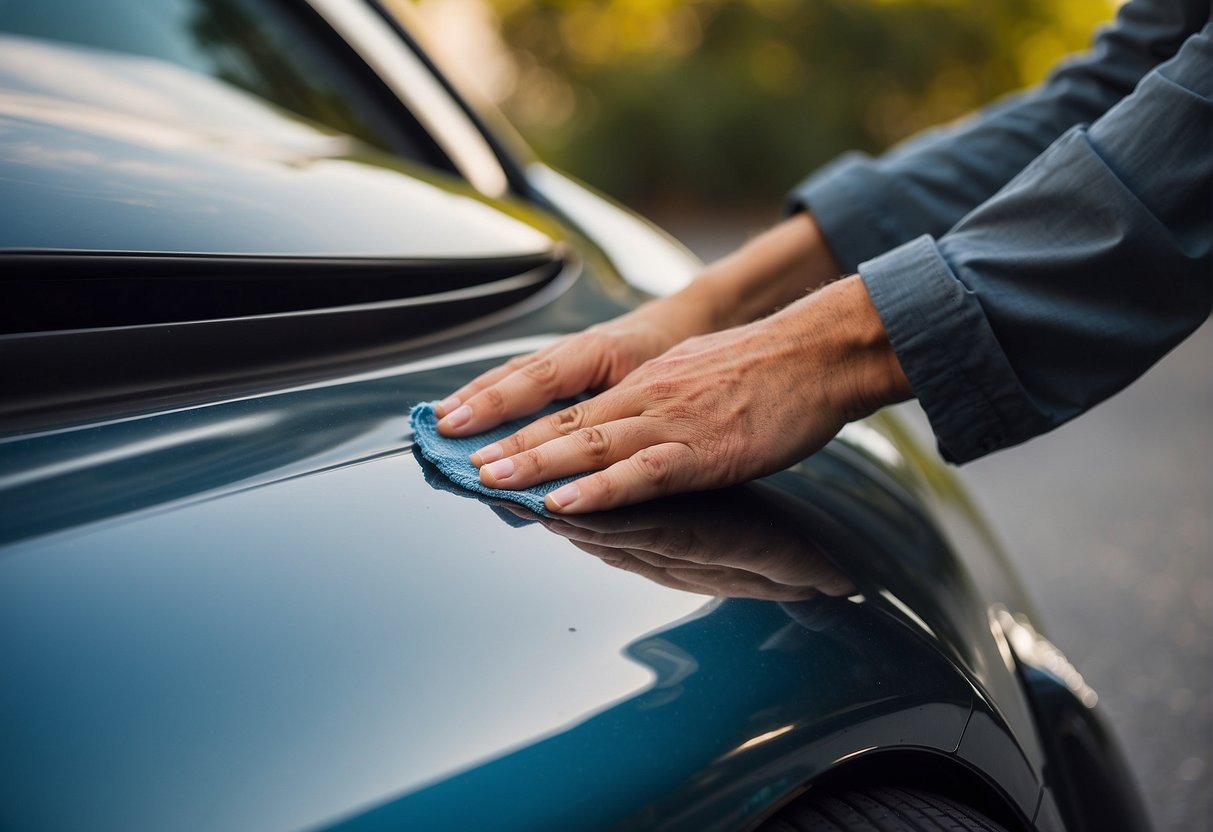
If the scratches on your car are too deep or extensive to be fixed with DIY methods, it may be time to consider professional scratch removal. Here are some things to keep in mind when choosing a body shop for your car’s repair needs.
Choosing a Body Shop
When selecting a body shop, it’s important to do your research and read reviews. Look for a shop that specializes in scratch removal and has a good reputation in the community. You can also ask for recommendations from friends or family members who have had similar work done on their cars.
Cost Considerations
The cost of professional scratch removal can vary depending on the severity of the damage and the body shop you choose. Be sure to get multiple quotes and compare prices before making a decision. Keep in mind that the cheapest option may not always be the best quality, so it’s important to balance cost with the quality of work.
Evaluating Repair Quality
When evaluating the quality of a body shop’s work, look for a few key things. First, check to see if the shop offers a warranty on their work. A good body shop should stand behind their work and offer a guarantee. Additionally, take a close look at the repaired area and make sure the paint color and texture match the rest of the car. Any signs of overspray or unevenness could indicate a poor quality repair.
Overall, professional scratch removal can be an effective way to restore your car’s appearance. Just be sure to do your research and choose a reputable body shop that can provide quality work at a fair price.
Advanced Scratch Repair Techniques
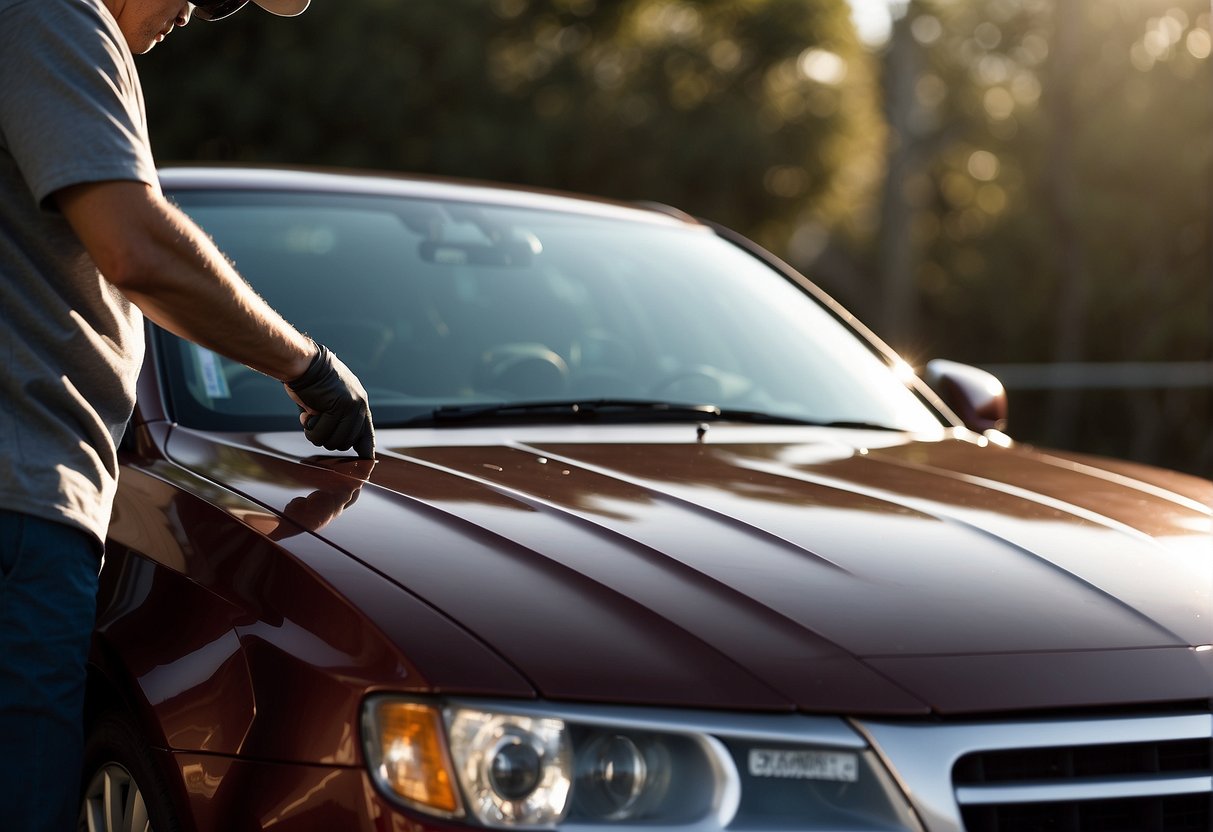
If you’ve tried the basic scratch removal techniques and still can’t get the desired results, it’s time to try some advanced scratch repair techniques. In this section, I will discuss some techniques that require a bit more skill and experience than the basic ones.
Using Polishing Compounds
Polishing compounds are abrasive products that are used to remove scratches from the surface of the car. They are available in different grades of abrasiveness, and you should choose the one that matches the severity of the scratch. Apply the polishing compound to a soft, clean microfiber cloth and rub it gently onto the scratched area in circular motions. Keep rubbing until the scratch disappears. Then, wipe off the residue with a clean cloth.
Wet Sanding and Buffing
Wet sanding is a technique that involves sanding the scratched area with a fine-grit sandpaper and water. The water acts as a lubricant and helps to prevent the sandpaper from scratching the surface even more. After sanding, you need to buff the area with a polishing compound to restore the shine. This technique is best used for deep scratches that cannot be removed with basic scratch removal techniques.
Touch-Up Paint Application
If the scratch is too deep to be removed by polishing or wet sanding, you may need to apply touch-up paint to the affected area. Touch-up paint is available in small bottles that match the color of your car. Apply the paint with a small brush and let it dry completely. Then, sand the area lightly with fine-grit sandpaper and buff it with a polishing compound to blend it with the surrounding paint. This technique requires a steady hand and some experience, so it’s best to practice on a small area before attempting to repair a large scratch.
Overall, these advanced scratch repair techniques require more skill and experience than the basic ones, but they can be very effective in removing deep scratches and restoring the appearance of your car. Remember to always use the appropriate tools and products, and take your time to ensure that you get the best results possible.
Finishing Touches

After removing scratches from your car, it’s important to take some extra steps to protect and maintain the repaired area. In this section, I will discuss two important finishing touches: waxing for protection and maintaining the repaired area.
Waxing for Protection
Waxing your car is an important step to protect the paint and keep it looking shiny. After removing scratches, it’s a good idea to apply a coat of wax to the repaired area. This will help protect the paint from future scratches and damage.
There are many different types of wax available, including paste wax, liquid wax, and spray wax. Paste wax is the most traditional and provides the best protection, but it can be difficult to apply. Liquid wax is easier to apply, but doesn’t provide as much protection as paste wax. Spray wax is the easiest to apply, but provides the least amount of protection.
To apply wax, start by washing and drying the area you want to wax. Apply a small amount of wax to a clean microfiber cloth and rub it onto the repaired area in a circular motion. Let the wax dry for a few minutes, then buff it off with a clean microfiber towel.
Maintaining the Repaired Area
After removing scratches, it’s important to maintain the repaired area to prevent future damage. This includes avoiding harsh chemicals and abrasive materials, and keeping the area clean and dry.
Avoid using any products that contain cutting or rubbing compounds, as these can damage the repaired area. Instead, use a mild soap and water to clean the area, and dry it with a clean microfiber towel.
If you notice any new scratches or damage to the repaired area, it’s important to address them as soon as possible to prevent further damage. By taking these steps to maintain the repaired area, you can keep your car looking great for years to come.
Preventing Future Scratches
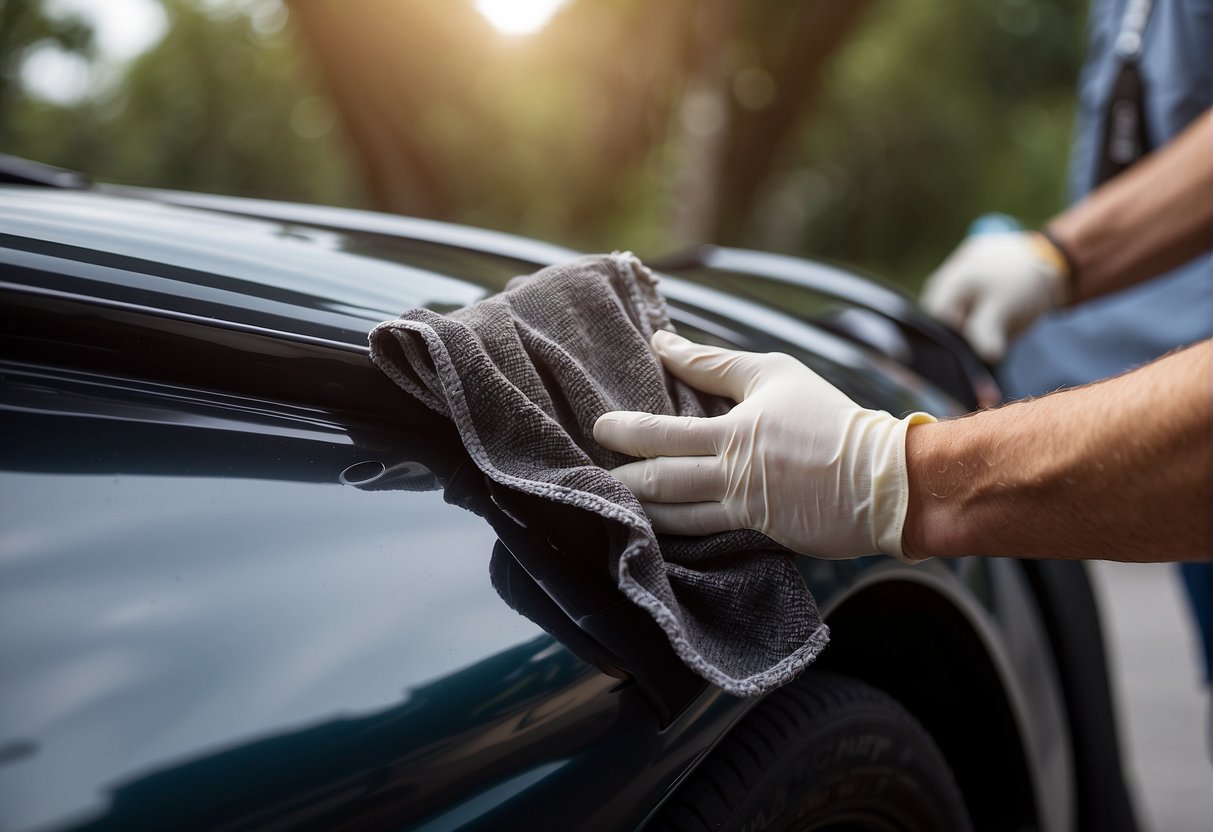
As someone who has dealt with car scratches before, I know how frustrating it can be to see new ones appear after you’ve just gotten rid of the old ones. Fortunately, there are a few things you can do to prevent future scratches from happening.
Regular Maintenance Tips
One of the best ways to prevent scratches is to keep your car clean. Dirt and debris on your car’s surface can act like sandpaper and scratch your paint when you wash or dry it. Regular car washes can help remove dirt and grime from your car’s surface, reducing the risk of scratches. When washing your car, use a microfiber towel or a soft sponge to avoid scratching the surface.
Waxing your car can also help prevent scratches. A good wax job will create a protective layer on your car’s surface, making it harder for dirt and debris to scratch your paint. Waxing your car every three to six months can help keep your car looking new and scratch-free.
Protective Measures
Another way to prevent scratches is to take protective measures. For example, you can use a car cover to protect your car from the elements when it’s parked outside. A car cover can help prevent scratches from tree branches, hail, and other debris that might fall on your car.
You can also use a coating product to protect your car’s surface. Ceramic coatings, for example, create a hard, protective layer on your car’s surface that can help prevent scratches. A ceramic coating can last for years and can help keep your car looking new and scratch-free.
In addition, be mindful of where you park your car. Avoid parking under trees or near bushes, as falling branches or leaves can scratch your car’s surface. Also, avoid parking too close to other cars, as car doors can easily scratch your car’s surface.
By following these tips, you can help prevent scratches from appearing on your car’s surface. Regular maintenance and protective measures can go a long way in keeping your car looking new and scratch-free.
Product and Tool Recommendations
Best Scratch Removal Products
When it comes to removing car scratches, there are a variety of products available on the market. After researching and testing, I have found that the following products are some of the best options:
- Meguiar’s Mirror Glaze Ultra-Cut
- Chemical Guys VSS
- Carfidant Ultimate
- Turtle Wax Scratch Repair & Renew
Meguiar’s Mirror Glaze Ultra-Cut is a great option for removing deep scratches, while Chemical Guys VSS is ideal for removing light to moderate scratches. Carfidant Ultimate is a versatile option that can be used on a variety of surfaces, including paint, glass, and plastic. Turtle Wax Scratch Repair & Renew is a budget-friendly option that is effective at removing light scratches.
All of these products can be found on Amazon at reasonable prices, and they come highly recommended by both professionals and DIY enthusiasts.
Essential Tools for DIY Repair
In addition to using the right product, having the right tools is essential for DIY scratch repair. Here are some tools that I recommend having on hand:
- Microfiber towels
- Foam applicator pads
- Dual-action polisher (optional)
- Paint touch-up pen (for deeper scratches)
Microfiber towels and foam applicator pads are essential for applying and removing the scratch removal product. A dual-action polisher can be helpful for applying the product evenly and achieving a smooth finish. If you have deeper scratches, a paint touch-up pen can be used to fill in the scratch and help it blend in with the surrounding paint.
By using the right products and tools, you can effectively remove car scratches and restore your vehicle’s appearance.
Frequently Asked Questions
What products are most effective for eliminating car scratches?
There are several products on the market that are effective for eliminating car scratches. Some of the most popular products include scratch removal kits, rubbing compounds, and car polishes. It’s important to choose a product that is specifically designed for your car’s paint color and type. This will ensure that the product is effective and won’t cause any damage to your car’s paint.
Is it possible to repair deep scratches on a car without professional help?
While it is possible to repair deep scratches on a car without professional help, it can be a difficult and time-consuming process. It’s important to use the right products and techniques to avoid damaging your car’s paint. If you’re not comfortable attempting the repair yourself, it’s best to seek professional help.
Can household items be used to treat scratches on a car’s surface?
Yes, there are some household items that can be used to treat scratches on a car’s surface. Toothpaste, baking soda, and even peanut butter have been known to work for minor scratches. However, it’s important to be cautious when using household items as they can sometimes cause more damage if not used correctly.
What steps should be taken to remove white scratches from a car?
To remove white scratches from a car, it’s important to first clean the affected area with soap and water. Then, apply a rubbing compound to the scratch and buff it out with a microfiber cloth. If the scratch is still visible, repeat the process until it is no longer visible.
How can one safely remove scratches from a car without harming the paint?
To safely remove scratches from a car without harming the paint, it’s important to use the right products and techniques. Always choose a product that is specifically designed for your car’s paint color and type. Use a microfiber cloth to apply the product and be sure to follow the instructions carefully.
What are the typical costs associated with professional car scratch repair?
The cost of professional car scratch repair can vary depending on the severity of the scratch and the location of the repair shop. On average, the cost can range from $50 to $300. It’s important to get a quote from a reputable repair shop before agreeing to any repairs.
